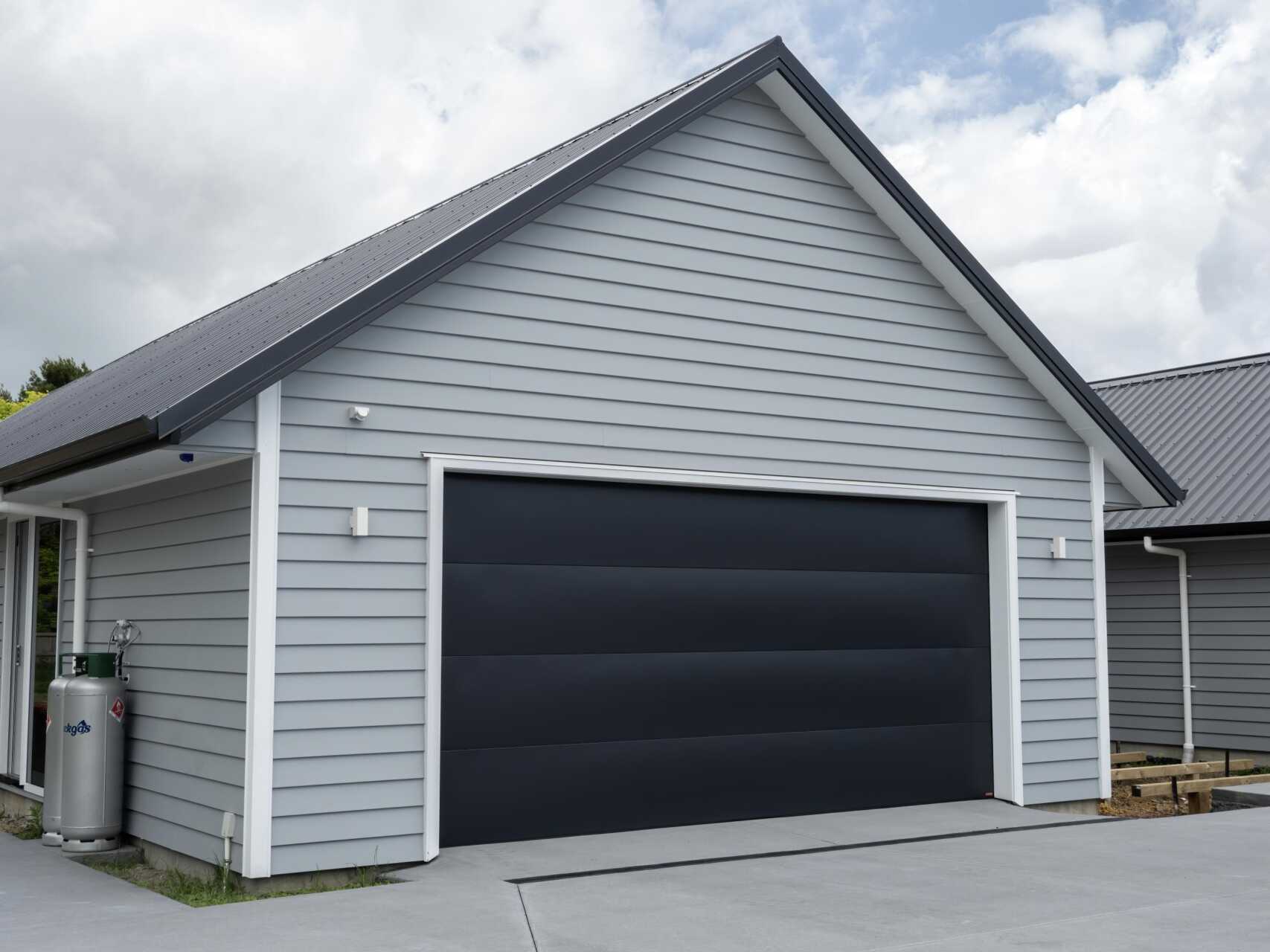
Contents
When it comes to residential overhead door installation, making the right choices from the start is vital. You’ll need to evaluate various door materials, gather specific tools, and prepare your garage properly. Understanding the installation process can save you time and potential headaches. However, even the most straightforward installations can present unexpected challenges. Let’s explore the essential steps and considerations to ensure a successful setup.
Key Takeaways
- Choose the right door material, style, and insulation based on your aesthetic preferences and energy efficiency needs.
- Gather essential tools and materials, and prepare your garage by clearing the area and taking accurate measurements.
- Follow a step-by-step installation guide, assembling door sections and securely installing tracks for proper alignment.
- Prioritize safety, especially with high-tension springs, and consider professional help for complex structural modifications and electrical connections.
- Regularly maintain your overhead door by lubricating moving parts and inspecting hardware to ensure long-term functionality and safety.
Choosing the Right Overhead Door for Your Home
When selecting the ideal overhead door for your home, what factors should you consider? Start by evaluating overhead door material options, which include steel, wood, aluminum, and fiberglass. Each material has unique attributes affecting durability, maintenance, and aesthetics.
Steel doors offer strength and security, while wood doors provide a classic look but require more upkeep.
Next, consider insulation benefits. Insulated doors can remarkably enhance energy efficiency, keeping your garage warmer in winter and cooler in summer. This saves you on heating and cooling costs and contributes to a more comfortable living space.
Don’t forget to think about style and how the door complements your home’s exterior design. Finding the right overhead door isn’t just about functionality; it’s about creating a welcoming environment that aligns with your lifestyle.
Aim for a door that reflects your personal taste while offering security and efficiency.
Tools and Materials Needed for Installation
To successfully install a residential overhead door, you’ll need a specific set of tools and materials to ensure the process runs smoothly.
Here’s a concise list of essential installation tools and material types:
Drill and Drill Bits: A power drill is vital for making holes in your garage structure.
Level and Measuring Tape: Accurate measurements ensure proper alignment and balance of the door.
Wrenches and Screwdrivers: These will help tighten bolts and screws securely during the installation.
In addition to these tools, make sure you have the right material types, including the overhead door panels, tracks, springs, and hardware kits.
Having everything ready before you start will streamline the installation process and help you achieve the best results.
Preparing Your Garage for Overhead Door Installation
Before you begin installing your overhead door, it’s crucial to prepare your garage properly. Start by clearing out the area around the garage door entrance. Remove any obstacles, tools, or debris that might hinder your work.
Next, take precise garage measurements to ensure your new door fits perfectly. Measure the height and width of the opening, noting any irregularities in the structure.
Consider the door style you’ve chosen, as this will impact the installation process. Different styles, such as sectional or roll-up doors, may require specific adjustments in your garage’s framing or tracks.
Verify that the track space is adequate and that there’s enough headroom for the door to operate smoothly. Finally, check for any signs of damage or wear in the garage structure that could affect the installation.
With these preparations in place, you’ll set a solid foundation for a successful installation.
Step-by-Step Guide to Installing Your Overhead Door
With the garage prepped and your measurements confirmed, it’s time to begin the installation of your overhead door. Follow these essential installation techniques to ensure a smooth process:
Assemble the Overhead Door Sections: Start by laying out the door panels and connecting them according to the manufacturer’s instructions. Ensure proper door alignment at each step to avoid complications later.
Install the Track System: Secure the vertical and horizontal tracks to the garage walls and ceiling. Make sure they’re level, as misalignment could lead to operational issues.
Hang the Door: With assistance, lift the assembled door into place and attach it to the track. Double-check that everything is aligned correctly and operates smoothly.
Essential Safety Precautions During Installation
While installing an overhead door may seem straightforward, prioritizing safety precautions is essential to prevent accidents and ensure a successful installation.
Start by wearing appropriate safety gear, including gloves, goggles, and steel-toed boots. This equipment protects you from potential injuries caused by heavy materials and sharp edges.
Before you begin, familiarize yourself with emergency procedures. Know the location of first aid kits and how to reach emergency services if needed. If you’re working with a partner, establish clear communication signals to coordinate your efforts safely.
Always verify that tools and installation equipment are in good condition to avoid malfunctions. Secure the workspace by removing any obstacles that could cause tripping hazards.
Finally, never attempt to lift heavy sections alone; always ask for assistance to manage the weight properly. These precautions protect you and foster a culture of safety within your community.
Troubleshooting Common Installation Issues
What do you do when your overhead door installation doesn’t go as planned?
It’s essential to identify and troubleshoot common issues right away. Here are three common problems you might encounter:
Overhead Door Alignment Issues: If your door isn’t level, check the tracks and rollers. Adjust them to ensure the door moves smoothly.
Spring Tension Problems: If the door feels heavy or won’t open, the springs may need adjustment. Always exercise caution; these springs are under high tension.
Track Obstructions: Inspect the tracks for any debris or misalignment that could hinder the overhead door’s movement.
Maintenance Tips for Your New Overhead Door
To keep your new overhead door functioning smoothly, establish a regular lubrication schedule for the moving parts.
Additionally, regularly inspect the hardware components to identify any wear or damage early on.
These simple maintenance steps can prolong the lifespan of your door and ensure peak performance.
Regular Lubrication Schedule
Regular lubrication is essential for the smooth operation and longevity of your new overhead door.
Implementing effective lubrication techniques is key to preventing wear and tear.
Follow these frequency guidelines to keep your door in peak condition:
Monthly: Apply lubricant to the rollers and tracks to minimize friction.
Every Three Months: Check and lubricate the hinges and springs for peak performance.
Annually: Inspect all components and perform a thorough lubrication routine to ensure everything functions smoothly.
Inspect Hardware Components
Maintaining your overhead door goes beyond lubrication; inspecting hardware components is equally important for peak function.
Regular hardware inspection helps identify any wear, rust, or misalignment that could hinder performance. Start by checking the springs, cables, and rollers, ensuring they’re free from damage and properly aligned.
Verify that all fasteners are tight and secure, as loose components can lead to larger issues down the line. It’s also vital to assess component compatibility; mismatched parts can lead to operational problems and safety risks.
By being proactive in your inspections, you extend the lifespan of your overhead door and enhance its safety and reliability.
Make hardware inspection a routine part of your maintenance schedule for maximum performance.
When to Call a Professional for Installation Assistance
Knowing when to call a professional for overhead door installation can save you time and stress.
If the installation process seems complex, you lack the necessary tools, or you’re facing time constraints, it’s wise to seek expert help.
Professional installers can ensure your door is properly fitted and functioning safely.
Complexity of Installation Process
While many homeowners may feel confident tackling DIY projects, installing a residential overhead door can present complexities that warrant professional assistance.
It’s essential to recognize when you could benefit from expert help due to installation challenges and installation complexity.
Consider these factors:
Structural Modifications: If your garage needs framing adjustments, calling a professional is wise.
Safety Concerns: High-tension springs and heavy components pose risks; professionals have the training to handle them safely.
Technical Expertise: If you’re unsure about electrical connections or remote programming, it’s best to seek assistance.
Lack of Necessary Tools
If you lack the essential tools needed for a residential overhead door installation, it’s time to contemplate professional help. Without the right equipment, you’ll face installation challenges that could lead to costly mistakes or even personal injury.
| Signs You Need Help | Feelings Associated |
|---|---|
| Incomplete toolset | Frustration |
| Uncertainty in the process | Anxiety |
| Risk of damage to your door | Regret |
Investing in a professional ensures your overhead door is installed correctly and safely, giving you peace of mind. Remember, it’s not just about having tools; it’s about having the right skills and experience to use them effectively. Don’t hesitate to reach out for assistance when needed.
Time Constraints and Scheduling
Even with the right tools, time constraints can greatly impact your ability to install a residential overhead door effectively.
If you find yourself in any of the following situations, it’s wise to call a professional:
- You’re facing tight time management due to work or family commitments.
- Your project timeline is longer than anticipated, causing delays.
- You lack the expertise to handle unexpected complications.
Hiring a professional can save you time and ensure a quality installation.
They can efficiently navigate challenges that might arise, allowing you to focus on other important matters.
Ultimately, knowing when to seek assistance enhances your project’s success and fosters a sense of community by connecting you with skilled experts in your area.
Review
Installing an overhead door might seem intimidating, but with the right guidance and preparation, you can tackle it confidently. Remember, even if you hit a snag, troubleshooting is part of the process—don’t let minor setbacks discourage you. By following the steps outlined, you’ll enhance your home’s curb appeal and enjoy the functionality of a well-installed door. Embrace the challenge; the satisfaction of completing this project yourself is truly rewarding!
Recent Posts
5 Expert Tips for Installing Residential Garage Doors
Installing a residential garage door might seem simple, but even small mistakes can lead to
Essential Tips for Installing Residential Overhead Doors
Installing residential overhead doors can seem intimidating, but with the right approach, it’s manageable. You’ll
Top Errors to Avoid in Garage Door Installation
A garage door installation can feel like traversing a maze, where one wrong turn can

